A crab is a marine creature with a flat body, eight legs, and claws. You can sometimes find small crabs in the sand on the beach. Crabs have a thick, shell-like covering called an “exoskeleton,” and you can find them in fresh and salt water. Crabs belong to the subphylum Crustacean, the largest group of marine arthropods, including lobsters, shrimps, and krill, shrimp-like crustaceans.
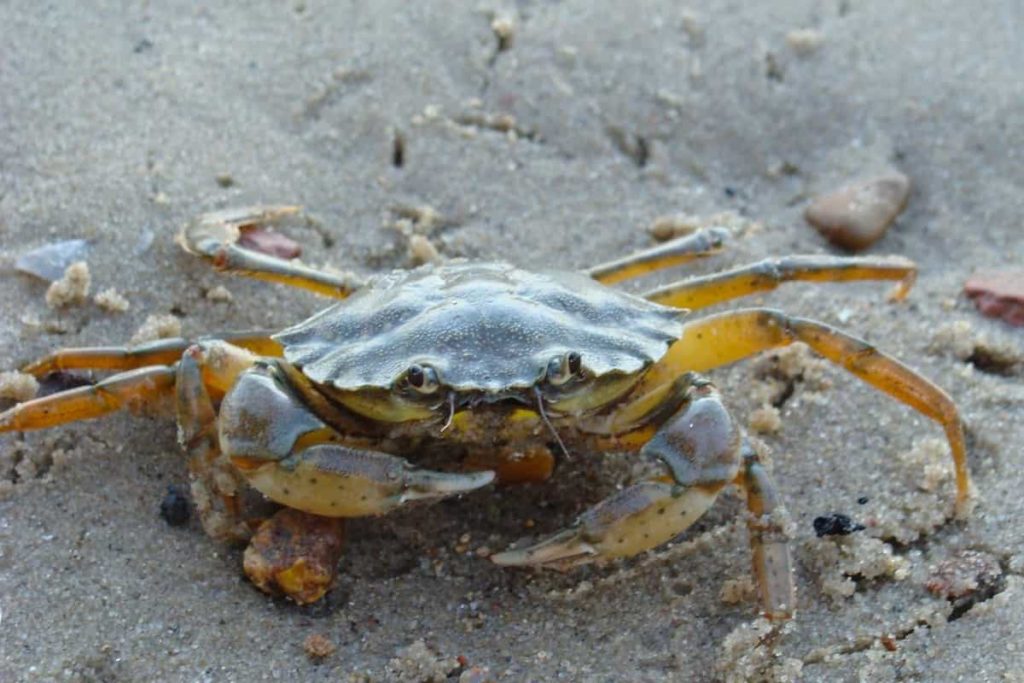
Crabs walk sideways on four pairs of legs and hold both legs away from their bodies with claws. Income or profit in mud crab farming depends on the size and current market demand. This technique serves as a means of improving food security and creating livelihood opportunities.
How to start Crab farming from scratch
What is crab farming?
A system of preserving or protecting crabs by keeping them in shallow saltwater pens, where they are fattened for market. Outsiders are investing heavily in crab farming due to its profit margins. Unfortunately, too much focus on its immediate financial benefits has blinded us to its long-term environmental impacts and socio-economic risks. To start crab farming, you need to follow the best farm management practices, including proper water management, right soil selection, soil and water temperature, pond design, etc.
How do you start a crab farm?
In this method, young crabs are grown for 5 to 6 months until they attain the desired size. Mud crab farming systems are usually pond-based, with or without mangroves. Pond size ranges between 0.5-2 hectares, with adequate bunds and tidal water exchange. If the pond is small, fencing is recommended. Poor water quality management is another factor responsible for high mortality during crab aquaculture.
It affects both farms operating in traditional ponds and farms using recirculating aquaculture systems. While many of these problems are due to poor system design, failure to implement it can also result in high mortality. Therefore, investors and stakeholders must understand the challenges in designing and operating a profitable farm. One of these includes conducting small-scale pilots to fine-tune operational aspects. Other methods include joining courses on water quality management, recirculating aquaculture systems, etc.
How long does it take to raise a crab?
Post-nursery crabs reach marketable size and maturity in 6-7 months compared to 18-24 months under natural conditions. For growing stages, some operators choose used tires and coconut leaves to provide shelter to reduce mortality. Vertical crab farming systems have also been designed to overcome this problem faced by traditional pond methods. Keeping individual crabs in cages reduces mortality due to cannibalism. In turn, using vertical farming boxes reduces the land requirement and makes it ideal for locations with high land costs.
Can you grow your own crab?
It will take about 105 days for the crabs to reach maturity, and so far, the effort appears to be successful. With the rapid growth of pond-raised crabs, a farm can produce two to three harvests in a given year since crabs don’t do well in freshwater during the winter months.
What habitat do crabs live in?
- Crabs are found in all oceans and freshwater. Some crabs live on land, sometimes many miles from water. Species such as fiddler crabs live in burrows in sand or mud, where they stay during the winter and high tides. Others live inside the shells of oysters or mussels.
- Crabs grow by molting. They shed their exoskeleton and then expand the new shell by inflating it with water and then hardening the new, larger shell. During molting, crabs are vulnerable to attack by hard-shelled crabs. Though, this moult-related cannibalism is an important limitation on the density at which crab can be grown in ponds.
- Providing shelter for crabs reduces the risk of attack and cannibalism during the short time they harden their shells. Onion bags or shade cloths, masonry blocks, short lengths of pipe, or car tires can be used to provide shelter.
- Providing shelter in ponds improves survival and production. However, it also complicates pond management. The amount of shelter in a pond is controlled by practical limitations on pond quality, labor, and harvesting maintenance.
- The optimum economic density at which crab can be grown also depends on the size of the crab at harvest. The smaller the size, the higher the number produced. Separating crabs by size can also be beneficial in reducing cannibalism.
In case you missed it: Earning 3 Lakh Per Month From Crab Cultivation: In Cage/Box Method, A Success Story of a Mud Crab Farmer
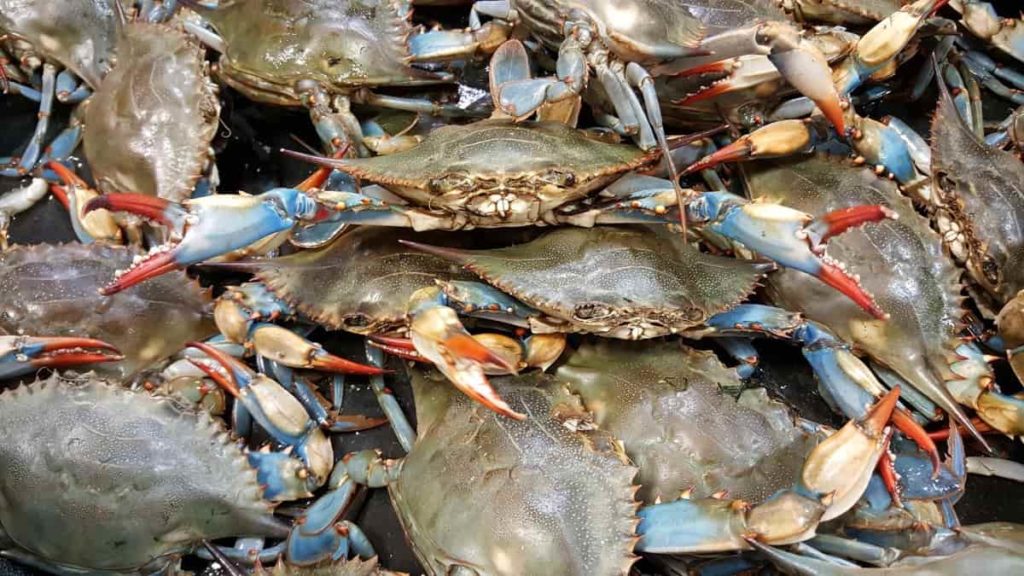
How many years do crabs live?
- Crabs have an average lifespan of 3 to 5 years, with some species living up to 30 years.
- The average lifespan of a crab is between three and five years. However, it depends a lot on the crab species.
Is vertical crab farming profitable?
- Crabs are raised in clean and organized vertical crab housing that is cleaned regularly.
- Water crabs are turned into profitable meat crabs in a short period in the crab habitat.
- No chemicals are being used on the farm. All feeds are organic, and the crab is grown naturally.
How do you raise crabs in a pond?
- Load your crabs into the freshwater pond.
- Freshwater ponds are ideal for raising blue crabs because the habitat structure will support their growth.
- Add a large bucket of algae to the pond daily for the crabs to eat.
- Collect algae from oceans, lakes, springs, or rivers.
Can you raise crab in a pond?
Crab lovers have no reason to worry as pond-raised crabs look and taste like their ocean-raised cousins. Care is taken to strengthen the bunds of the pool without any holes or crevices. Special care is taken in the sluice area as these crabs tend to escape from areas close to the sluice gate. Entrances should be reinforced with bamboo mats inside the bund. The pond is properly fenced using bamboo poles and nets on the sides of the bund, which are inclined towards the pond to prevent the escape of crabs.
Water supply to mud crab pond – Water supply or water exchange in mud crab pond is done by seawater. Water is exchanged through sluice gates; these gates are capable of regulating the inflow and outflow of tidal water. Sluice gates are usually fitted with bamboo screens to prevent the escape of mud crabs. Seawater is another option for tidewater depletion in these locations. To prepare the crab pond, drain all the water from the pond and allow it to dry in the sunlight before applying lime. Allow water during high tide, and pump seawater if not at the height of 5 feet (1.5 meters) or less.
Can mud crabs survive in freshwater?
- In general, mud crabs can tolerate a wide range of salinities. They can survive in fresh water for a few hours, enabling us to sterilize them in fresh water, killing any harmful bacteria that can only survive in salt water.
- Mud crabs prefer salinities of 15-25 ppt. Mud crabs can live in mangrove habitats where there is both freshwater and brackish water that will mix with saltwater. Thus, they do not live in freshwater. They will only be able to survive in freshwater environments for a very short time. It is impossible to farm mud crabs using fresh water. Thus the only thing you can use to farm mud crabs is salt water.
- Mud crabs are very sensitive to the salinity level of the environment in which they live. You can do to cultivate it using salt water as an environment. Many people already farm mud crabs, especially those living in coastal areas with natural saltwater. They will use the area to build ponds for mud crab farming. The best thing about this farming is that you don’t need a huge budget to start a farm. This form can be done on a small scale, so anyone can start building it if they want to.
- Additionally, the labor cost is very low, making it ideal for those just starting their first business. But despite this low cost and budget, it does not mean that their income will be low. In contrast, mud crab farming can give them a lot of income because the value of the shellfish itself is very high. This way, you’ll want to make a lot of profit unless you’re into freshwater mud farming.
- Freshwater crabs are an important part of aquatic habitats as they are one of the largest and most common invertebrates in rivers and lakes.
In case you missed it: Crab Training in India; Crab Cultural Practices
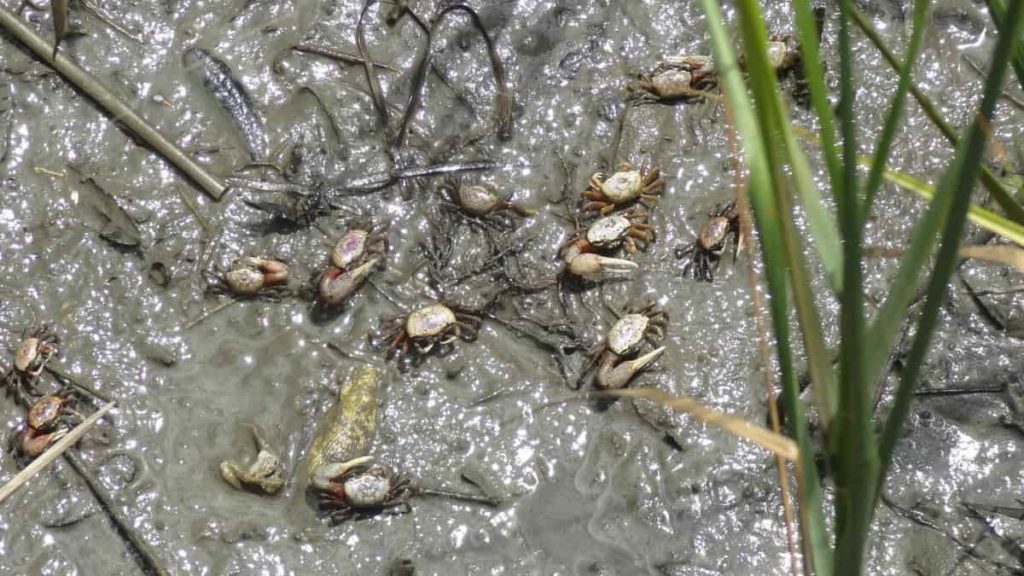
Is crab farming profitable in India?
- Mud crabs are in high demand and value in the export and local markets due to their meat and fast growth rate.
- Commercial mud crab farming is one of India’s lucrative and profitable aquaculture businesses.
How do you raise crab at home?
- They are very hardy animals and tolerate different water conditions. When setting up a proper tank, a crab will do fine in a 20-gallon aquarium but can outgrow a smaller setup. These crabs average about 9.5 to 11 inches long, so you’ll need a larger aquarium if you have more than one mud crab.
- Fill the aquarium with salt water to about 6 to 10 inches. Mud crabs are bottom feeders and won’t use up the entire aquarium, so there’s no need to fill it to the top.
- Attach the oxygen pump and filter. The filter and oxygen pump will not fully submerge, so you must pump salt water through the system. Before adding the crab, turn it on to ensure it will cook properly.
- Decorate the tank with caves to shelter the crabs. If possible, add decorations above the water’s surface so the crabs can climb up if needed. Plants are unnecessary, but you can add them as a food source or for aesthetic purposes.
- Add your crabs and see how they behave. You will find that they are most active at night, so you will want to feed them in the late evening to observe their feeding behavior.
How do you raise crab?
Starting mud crab farming is very simple and easy; even beginners can start this business. Mud crabs are raised in many different ways depending on the facilities available in your area. You can grow mud crabs in two systems.
1. Grow-out system – In the grow-out farming system, young crabs are reared and grown for 5 to 6 months until they reach marketing size and weight. This type of crab farming system is usually pond based. The pond size depends on the type of produce. Generally, ponds for crab farming are between 0.5 and 2 hectares. Small-sized ponds are very suitable for crab farming. Because they are easily maintained, if the pond size is reduced, install a suitable fence.
Reinforcement along the outlet area is essential in large ponds where natural conditions prevail. You can stock wild-collected juvenile crabs that weigh around 10 to 100 grams. The production period can range from 3 to 6 months, depending on the crab size and available facilities. You can stock 1-3 crabs per square meter in commercial production with additional feed.
You can visit the nearest local market and collect rotting fish, birds, and animal offal from the slaughterhouse. Feed the crabs 5% of their total weight daily. Collect some crabs and try to determine the average weight. Regular sampling is essential to monitor growth and general health and to adjust feeding rates. Place some pipes in the pond to shelter and reduce mutual attacks and predation. Within 3 to 5 months, the crabs will reach marketing weight and be fit for sale.
2. Fattening system – Raising soft shell crabs for a certain period until their exoskeleton hardens is called the crab fattening system. Hard shell crabs fetch four to five times more in the market than soft shell crabs. Therefore, crab farming in this system takes less time, and the process is very profitable. You can do crab fattening mainly in two systems which are detailed below.
- Fattening in Pond – Any pond can be manufactured from 0.025 to 0.2 ha. Small sea ponds with a depth of 1 to 1.5 meters are suitable for crab farming. Prepare the pond completely before stocking crabs in the pond. Pond preparation is done by draining the pond water, drying it in the sun, and adding plenty of lime. Build a fence around the pond for fattening.
- Fattening in pens or cages – Crab fattening can be done in pens, floating net cages, bamboo cages in shallow marine waterways, and large crab ponds and tanks with good access to seawater. Arrange the cages in a row so you can easily feed and monitor the crabs. A stocking of 10 crabs per square meter per cage and 5 crabs per square meter per pen is ideal.
In case you missed it: Mud Crab Fattening Profits and Cost
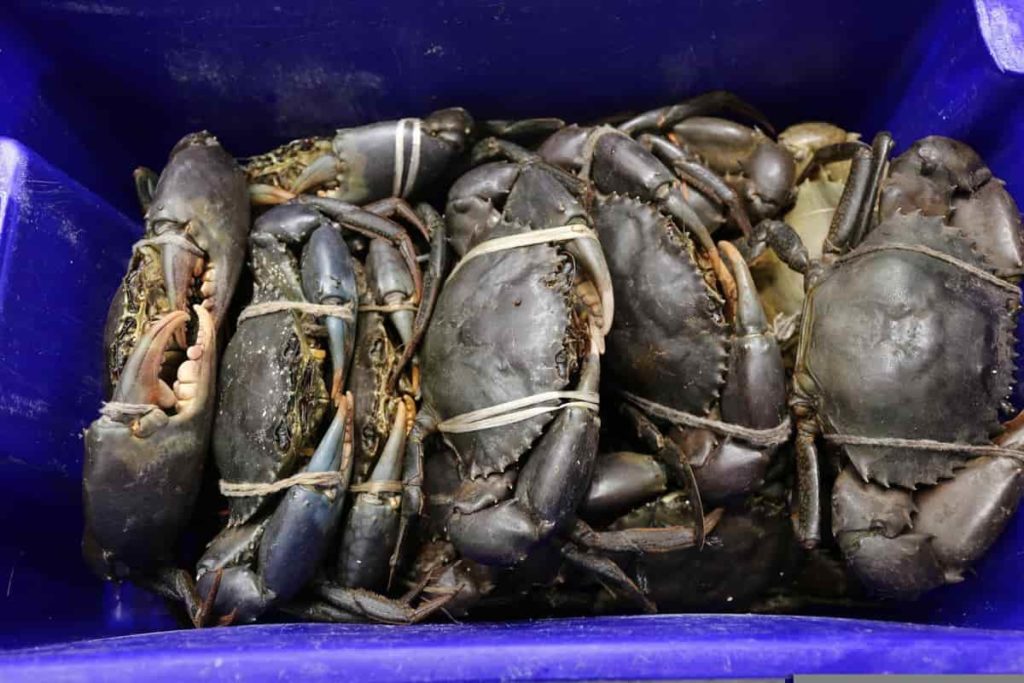
Can crabs be farm-raised?
- Farming can provide bait crab production or small soft shell crab for the restaurant market. Some fishermen may decide to farm crab, and some farmers may increase crab production. By doing this, you can diversify your pond.
- The land that is not good for agriculture is used to create fish farms. Some points should be kept in mind for a fish farm. As the soil must have water holding capacity, do not build a pond on sandy and loamy soil. If you want to test the soil, dig a 1-foot wide and deep pit on the ground and fill it with water. If it stays for 1 to 2 days, it is good for fish farming, but if there is no water in the pit, it is not good for fish farming. There are three types of pools: nursery pool, rearing pool, and production pool.
How many species are there of crab?
More than 6,700 species of crabs have been identified. Some crabs live exclusively in the ocean, while others live along the coast, and some crabs live in freshwater rather than saltwater ocean environments. Still, others live on land full time but are always near some form of water. For example, mud crabs in the genus Scylla live in coastal areas, estuaries, and backwaters.
I. Larger Species: Larger species are locally known as ‘Green Mud Crab.’ It grows to a maximum width of 22 cm and a weight of 2 kg. They are free-living and distinguished by polygonal markings on all appendages.
2. Smaller species: The smaller species are known as ‘red claws.’ It grows to 12.7 cm carapace width and 1.2 kg in weight. It is polygonal without markings and has a burrowing habit. Both species have good demand in domestic and foreign markets.
What food do crabs eat?
- Most crabs are carnivores and scavengers like fish, crustaceans, shrimp, and other small animals. Still, they usually eat various foods, including some non-meat options. In other words, some crabs are carnivores, some are herbivores, but most species are omnivores.
- Artificial feed: Generally, artificial fish feed is available in the markets. This feed is available in pellet form, i.e., wet and dry pellet. Carboxymethyl cellulose or gelatin is added to the wet pellet to harden the feed and finely ground into pellets. It is healthy but cannot be stored for long. In a dry tablet, because it is stored for a long time, it is carried from one place to another. It has a moisture content of 8-11%. There are two types of dry tablets, one is the sinking type, and the other is the floating type.
- Protein: Basically, different species of fish require different amounts of protein in their diet; for example, crab requires 18-20% protein, catfish 28-32%, tilapia 32- 38%, and hybrid striped brass requires 38-42% protein in their feed.
- Types of Feed: Two types of feed are available, i.e., floating and sinking feed. Fish species have different feed preferences; crabs only eat shrink feed. The feed is available in the form of pellets in different sizes according to the size of the fish.
- Medicated feed: Medicated feed is used when fish stop eating or become sick. Medicinal feed is used to cure fish from diseases.
How many crabs are born at once?
A female crab can lay up to 100,000 eggs.
How do you make a crab habitat?
- The important aspect of caring for freshwater crab species is creating the perfect environment. A comfortable space that mimics their natural environment. While you may want to research to learn more about your particular crab’s natural habitat, it’s not difficult to cover the basics.
- Firstly, you need to make sure the tank is big enough. Some owners keep crabs in single-breed tanks that are only 10 gallons in size. It is fine for small crabs that are only a few inches wide. However, if you are going with a larger species like Rainbow Land Crabs, you may need up to 30 gallons. Next, you’ll need to learn more about your crab soil and water needs. Not all crabs are fully aquatic. Most of them divide their time equally between land and water living.
- If your crab is a species that spends a lot of time on dry land, you must provide that space. Otherwise, your crab may get sick or even drown. Fortunately, grounding isn’t too difficult.
- You can build a paludarium tank with a floating perch. Depending on crab species, you could need to invest in heaters or humidifiers to keep your pet healthy. As for tank decorations, crabs prefer many varieties. Whether they’re underwater or on land, crustaceans are great explorers. Also, they need places to hide.
- Consider filling the aquarium with live plants, driftwood, and rocks. This natural decoration can help your crabs feel safe. Artificial decorations like PVC pipes, overturned pottery, and plastic shelters all work.
In case you missed it: Mud Crab Farming Information Guide
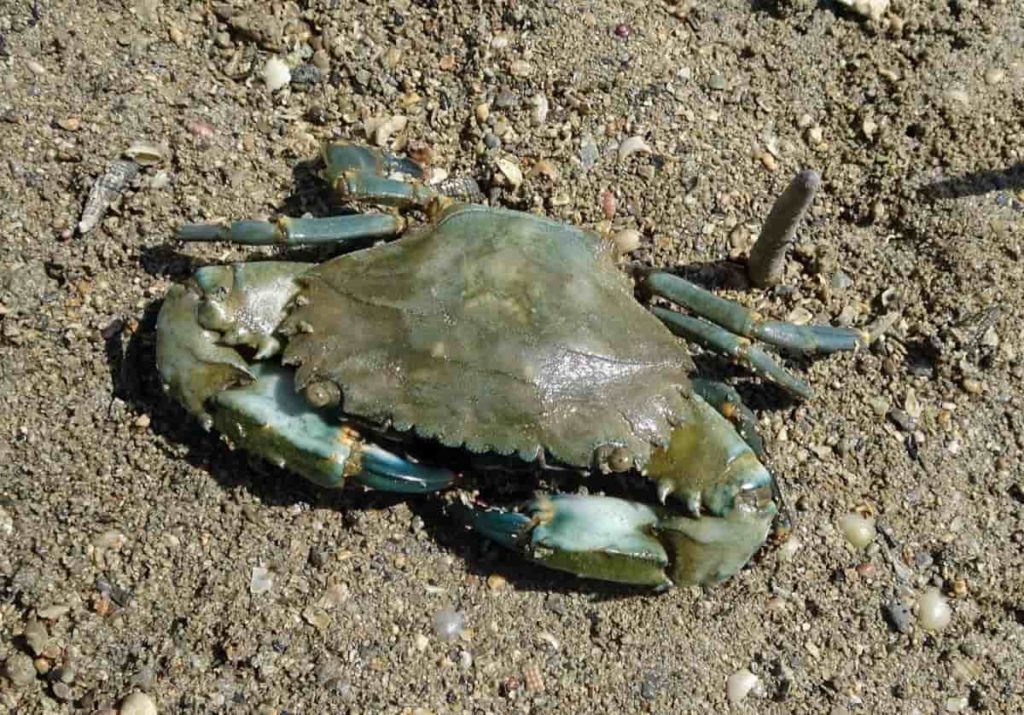
What time is the best time to catch crabs?
- The best time to catch crabs is when the water is running, especially when the tide is coming in.
- As the tide approaches, crabs are drawn to shore as they actively feed on small aquatic organisms stirred by the moving water. It makes them easier to find.
How much water do crabs need?
- To mimic their natural habitat, fiddler crabs require saltwater and dry land in their aquariums. If you have one to four fiddler crabs, provide an aquarium of at least 10 gallons. Add 3 to 5 gallons more tank space for each additional crab. Required water conditions may vary by species. However, most critters you see in the aquarium trade will need a similar tropical environment.
- Depending on your species, the desired pH balance will be a bit more specific. Whatever the case, be sure to filter the water first. Crabs can be sensitive to chemicals in tap water, such as chlorine. Another thing is salinity. Some species prefer very low salinity levels. In these cases, you must add a little sea salt to the water before introducing your crab.
What is the best way to catch crabs?
- The easiest way to catch crabs is with a dip net. Another easy method is to drop the fishing line with the bait on end. Just wait for a tug, then pull the crab in, catching it in the net. The only downside to the line method is that you can only catch one crab at a time.
- The crabs are harvested mainly when the shell has hardened and is primarily done in the morning or evening. Harvesting is mainly done within 20 days. Crab production is 5,000 kg per hectare or 2,000 kg per acre.
- Mud crabs should be harvested before the next moult and after the shell has hardened enough. After draining the pond, the crabs are collected. Scoop nets, ring nets, and baits are used to collect crabs. Crab harvesting should be done early in the morning or late in the evening to reduce the mortality rate of crabs due to overheating water in the afternoon. A medium-sized pond can average handle 9 to 10 crab fattening operations in a year.
In case you missed it: 16 Key Rules for Effective Shrimp/Prawn Farm Management: From Planning to Reduce Production Cost
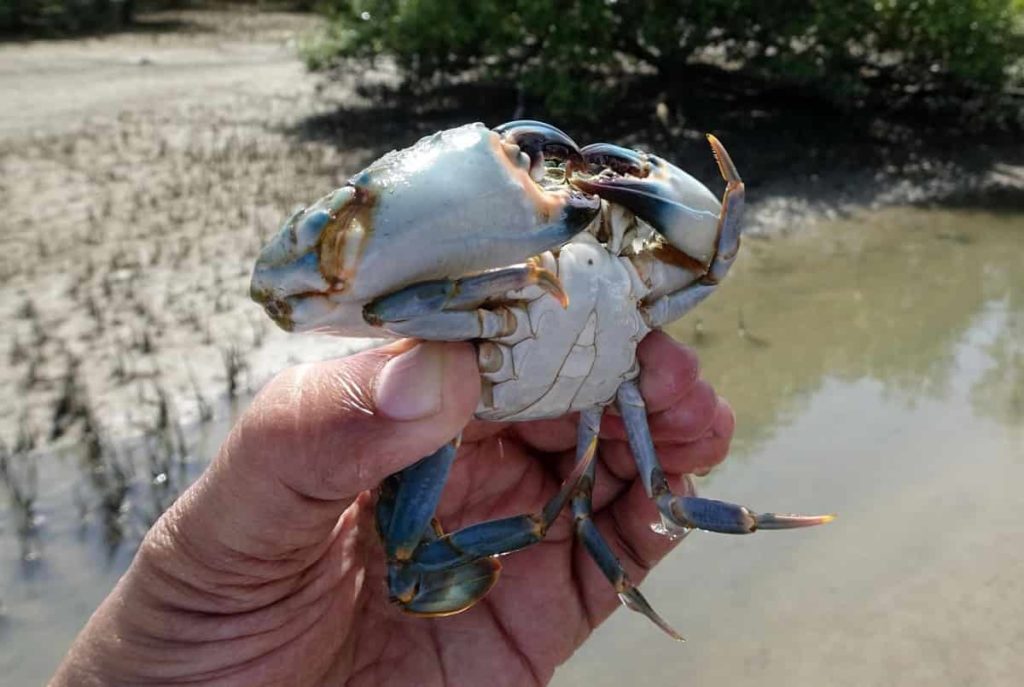
Conclusion
Crab farming has significant advantages, labor cost is very low, the production cost is relatively low, and they grow very fast. As a result, commercial crab farming business is improving the lifestyle of people in coastal areas. Here, we can earn more profit from the crab farming business with proper care and management than shrimp farming.
- How to Make Houseplants Bushy: Effective Tips and Ideas
- Innovative Strategies for Boosting Coconut Pollination and Yield
- Pollination Strategies for Maximum Pumpkin Yield
- The Complete Guide to Chicken Fattening: Strategies for Maximum Growth
- Natural Solutions for Tulip Problems: 100% Effective Remedies for Leaf and Bulb-Related Issues
- Revolutionizing Citrus Preservation: Towards a Healthier, Greener Future
- Natural Solutions for Peony Leaf and Flower Problems: 100% Effective Remedies
- Maximizing Profits with Avocado Contract Farming in India: A Comprehensive Guide
- Natural Solutions for Hydrangea Problems: 100% Effective Remedies for Leaf and Flowers
- The Ultimate Guide to Choosing the Perfect Foliage Friend: Bringing Life Indoors
- From Sunlight to Sustainability: 15 Ways to Use Solar Technology in Agriculture
- The Ultimate Guide to Dong Tao Chicken: Exploring from History to Raising
- The Eco-Friendly Makeover: How to Convert Your Unused Swimming Pool into a Fish Pond
- Mastering the Art of Delaware Chicken Farming: Essentials for Healthy Backyard Flocks
- 20 Best Homemade Fertilizers for Money Plant: DIY Recipes and Application Methods
- How to Craft a Comprehensive Free-Range Chicken Farming Business Plan
- Brighten Your Flock: Raising Easter Egger Chickens for Beauty and Bounty
- How to Optimize Your Poultry Egg Farm Business Plan with These Strategies
- Subsidy for Spirulina Cultivation: How Indian Government Schemes Encouraging Spirulina Farmers
- Ultimate Guide to Raising Dominique Chickens: Breeding, Feeding, Egg-Production, and Care
- Mastering the Art of Raising Jersey Giant Chickens: Care, Feeding, and More
- Ultimate Guide to Raising Legbar Chickens: Breeding, Farming Practices, Diet, Egg-Production
- How to Raise Welsummer Chickens: A Comprehensive Guide for Beginners
- How to Protect Indoor Plants in Winter: A Comprehensive Guide
- Ultimate Guide to Grow Bag Gardening: Tips, Tricks, and Planting Ideas for Urban Gardeners
- Guide to Lotus Cultivation: How to Propagate, Plant, Grow, Care, Cost, and Profit
- Agriculture Drone Subsidy Scheme: Government Kisan Subsidy, License, and How to Apply Online
- Ultimate Guide to Raising Araucana Chickens: Breed Profile, Farming Economics, Diet, and Care
- Bringing Hydroponics to Classroom: Importance, Benefits of Learning for School Students
- Ultimate Guide to Raising Polish Chickens: Breed Profile, Farming Economics, Diet, and Care
- Ultimate Guide to Raising Australorp Chickens: Profile, Farming Economics, Egg Production, Diet, and Care
- Silkie Chicken Farming: Raising Practices, Varieties, Egg Production, Diet, and Care
- Sussex Chicken Farming: Raising Practices, Varieties, Egg Production, Diet and Care
- Homemade Feed Formulations for Livestock: Discover Cost-effective Starter to Finisher Feed Recipes
- 20 Best Pig Weight Gain Supplements: Top Swine Weight Gain Formulas
- Ultimate Guide to Elderberry Farming: Propagation, Planting, Yield, Cost, and Profit
Sir I am interested in crab farming but confused with where to sell them